When Monarch announced the debut of a 9th class for Classic Constructed, I was ecstatic. And when that class was themed 'illusionist' - promising a deck where powerful threats where more fragile than they appeared - LSS had me.

But Prism proved to be built around a very different concept of 'illusion' than I'd imagined. The two lanes available to Light Illusionists were 'Brute-sized attacks that Brutes can dispel' and 'Ninja-like attack sequences with stacking effects'. I was looking for 'smoke and mirrors', but Prism hit much harder and rendered efforts to target her illusions futile through sheer density, encouraging attacks directly at her. In time, I found versions of Prism that I could enjoy for what they were, but she was never the realized concept I'd been so speculatively enthusiastic for.
Dromai was much the same story. While her dragons more fully realized the concept of 'defensive distractions', they acted more as pets than illusions. In my head, I pictured Prism's attack actions as lightning-quick conjuring of light, dispelled just as quickly as their attacks resolved. Dromai, in contrast, was sculpting creatures from ash in a slower, more intentional fashion, investing in the form and function of a durable force. But again, we were dealing in board states; and again, the decision was in the hands of my opponent, with correct answers and learned patterns.
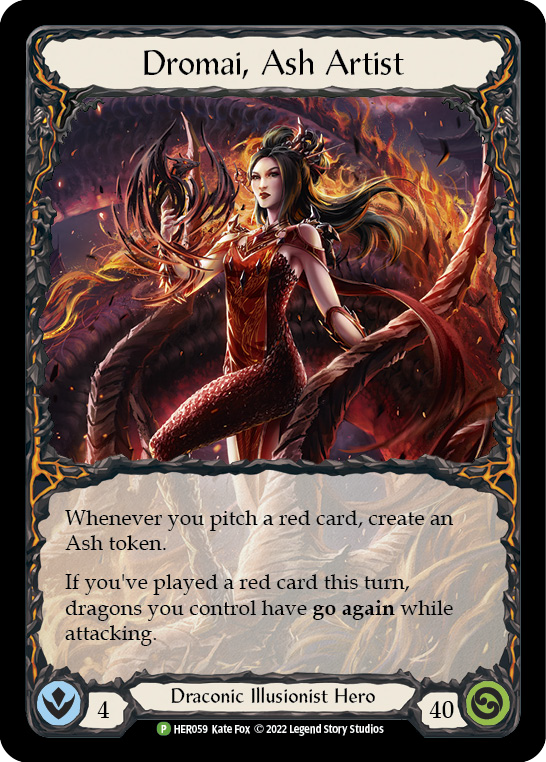
All the while, I held out hope for the 'blue Illusionist' whose eventual arrival was undeniable. Yellow Illusionist had pushed the envelope on stats to compensate for the sub-par reputation of the middle cycle; Red Illusionist found its niche with wide strings of attacks and a wide board to support that; surely Blue Illusionist would take full advantage of pitching? And decks that pitch well tend to play for second cycles, either through fatigue or control. I was praying for the latter.
Well, Enigma came - and quickly the player base developed her into a wide board state deck with multiple attacks per turn, spectra auras, and a dragon. It was Prism and Dromai in a deep shade of blue, a cruel joke after so many years of hoping this time would be different.
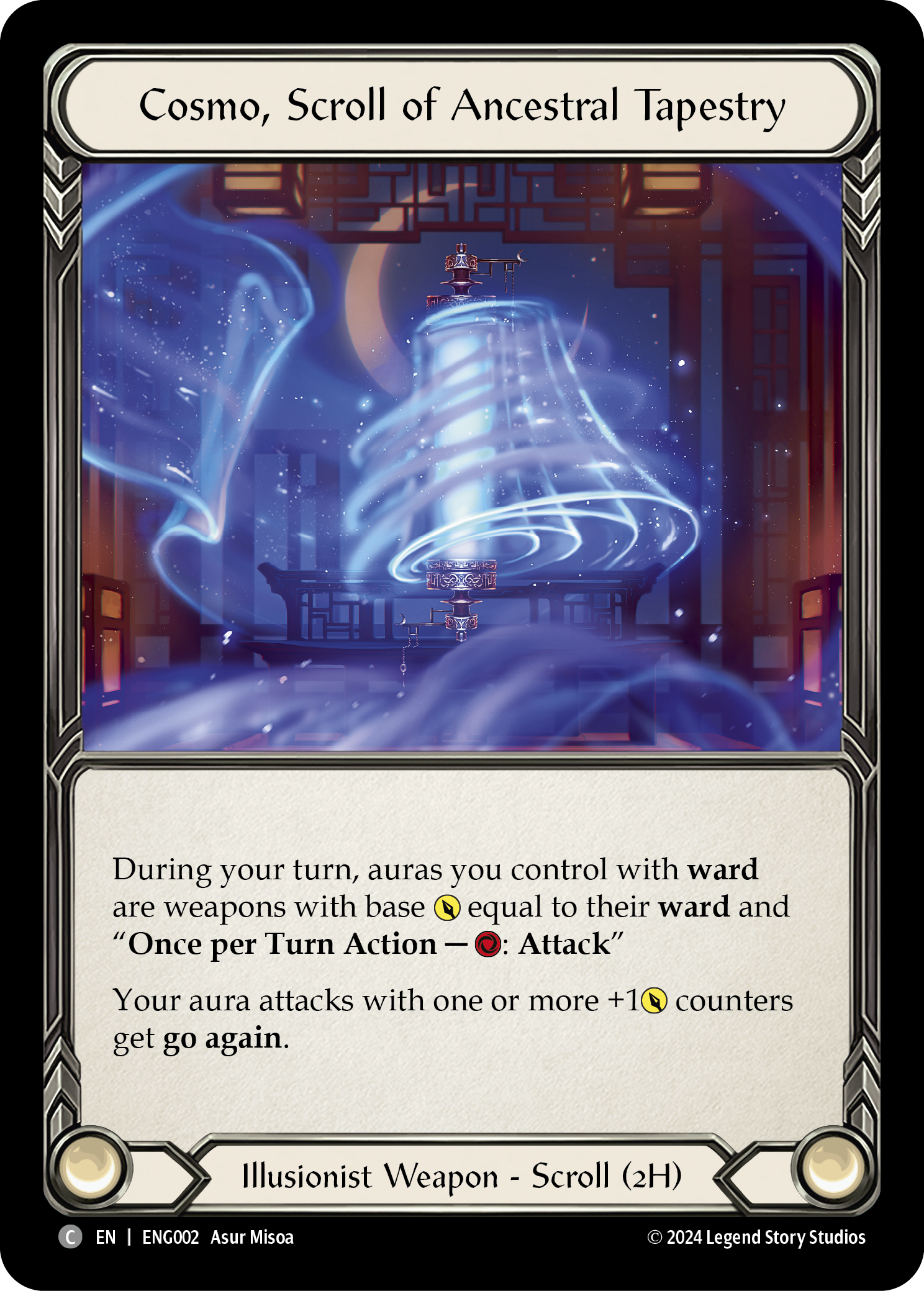


While Enigma picked up steam among my locals, I let the deck sit at home, waiting for someone to come at the hero from a different angle.
Those of you who follow my writing know that I'm an Azalea main - but more than that, I'm a Sandscour Azalea main. I love the playstyle of a control deck, and I love having a toolbox to pull from to meet a challenge mid-game. Beyond Azalea, I'm also dedicated to Nuu and Dash I/O, heroes who similarly disrupt and play to their outs and seek solutions from the corners of their card pools. During Dusk Till Dawn, I found glimmers of that playstyle in Prism, Awakener of Sol; by seeking out angels with specific abilities, I could evoke the toolbox - only angels were never terribly disruptive, nor was the deck truly viable. When the 2nd Prism got her 3rd Luminaris, the deck once more shifted away from control, and the magic was gone.
What I'm really seeking is meaningful choice, decision points where I could take one of two paths, and the right answer must be found in the negotiated space between me and my opponent. And while the initial builds for Enigma were disenchanting, 'meaningful moments of choice' were baked into the Mystic card pool, inherent because blue cards pitch so well but also designed into the effects. Transcend cards epitomize crossroads moments, requiring that you've built your deck with many blues, and then that you play those blues rather than pitching them - all for the reward of getting enhanced pitch cards back, which you still need to spend on something to get value out of. I found myself saying, "I want to lean into the Mystic card pool more"; Mystic, not Illusionist, was the primary driver of my interest in Enigma.
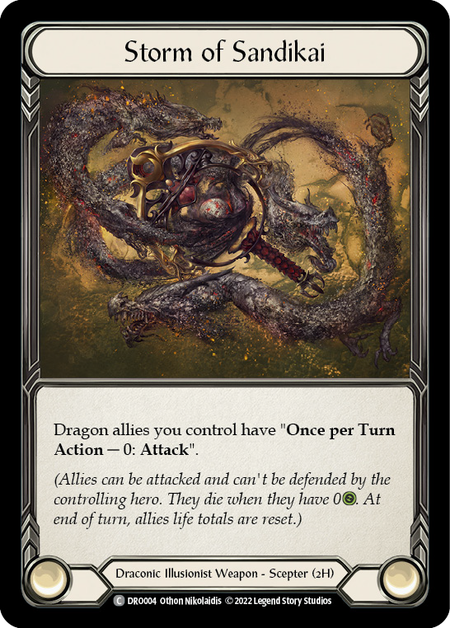
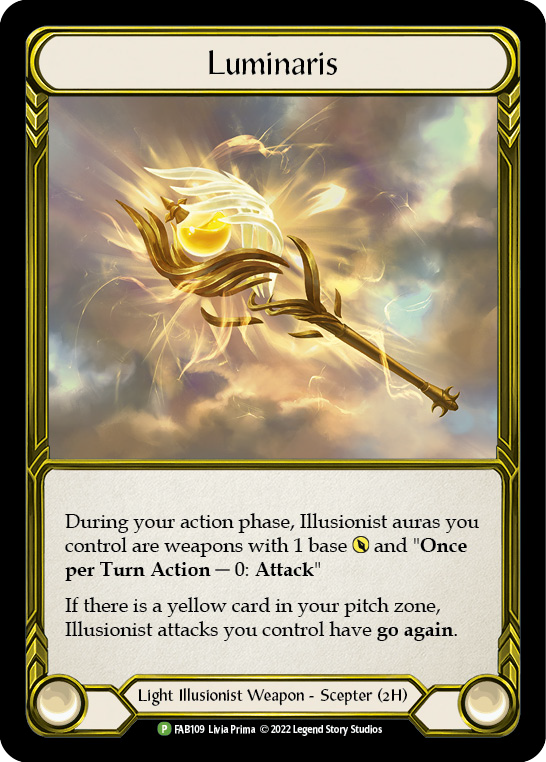
Sometimes the answers lie in the most unexpected places.
In all my years of searching for the Illusionist build that spoke to me, I never once considered that the weapon was my stumbling block. Perhaps that's because Luminaris was so blatantly strong in Prism, because Dromai essentially didn't function without Storm of Sandikai. The orbs felt like seeds for the future, not true alternatives. Why would Enigma be any different?
But the moment I saw Tyler Horspool flip over Reality Refractor during the Battle Hardened: San Diego stream, it clicked: my ideal Illusionist didn't use go again. Wide combat chains required wide boards, and wide boards were the common feature of every Illusionist who had disappointed me. We weren't charged with protecting and maintaining multiple auras in a fickle fight for value; we just needed one.

Weapons
- Cosmo, Scroll of Ancestral Tapestry (1)
- Reality Refractor (1)
Equipment
- Crown of Reflection (1)
- Meridian Pathway (1)
- Traverse the Universe (1)
- Silent Stilettos (1)
- Uphold Tradition (1)
- Nullrune Gloves (1)
- Fyendal's Spring Tunic (1)
- Aqua Laps (1)
- Stonewall Gauntlet (1)
Loadout
- A Drop in the Ocean (Blue) (1)
- Astral Etchings (Red) (3)
- Enlightened Strike (Red) (3)
- Astral Etchings (Blue) (3)
- Essence of Ancestry: Body (Red) (3)
- Homage to Ancestors (Blue) (1)
- Moon Chakra (Blue) (3)
- Waning Vengeance (Red) (3)
- Manifestation of Miragai (Blue) (2)
- Preserve Tradition (Blue) (1)
- Rage Specter (Blue) (3)
- Command and Conquer (Red) (3)
- Path Well Traveled (Blue) (1)
- Spectral Manifestations (Blue) (3)
- First Tenet of Chi: Wind (Blue) (3)
- Sink Below (Red) (3)
- That All You Got? (Yellow) (3)
- Shimmers of Silver (Blue) (3)
- Moon Chakra (Red) (3)
- Levels of Enlightenment (Blue) (3)
- Orihon of Mystic Tenets (Blue) (1)
- Restless Coalescence (Yellow) (3)
- Second Tenet of Chi: Wind (Blue) (3)
- Spectral Manifestations (Red) (3)
- Spectral Manifestations (Yellow) (3)
- Stir the Pot (Blue) (1)
- This Round's on Me (Blue) (3)
- Rising Sun, Setting Moon (Blue) (1)
It may seem counter-intuitive to say that a deck built around protecting the tower is full of choices, but truly it is. Whereas Cosmo Enigma decks have key auras they need to keep on the board (such as Miragai), the Refractor build sees all their auras as about equal in value. The biggest distinction is how many counters you've managed to put on an aura - which is seldom more than the aura was generated with.
Refractor Enigma is heavily focused on Spectral Shield tokens, because they're the best value proposition: cheap and abundant to create, they still swing for 5 damage, and only cost a single resource to use. We can play our 1-for-5 turn from a single card, or a single Tunic resource, if necessary. That's essentially our minimum floor.
The more common playline is built around Spectral Manifestations. A 2-cost card, Manifestations generates a Spectral Shield with 1-3 +1 counters on it; with a blue pitched, this becomes a 2-card 6-8 attack.

A baseline like that evokes the Guardian playstyle, but if our Spectral Shield is on the board from the last turn, we can run that off a single resource. But if you're following the through-line, you're probably asking: "How is this giving you choices like you want, Alex?" The answer isn't immediately apparent from looking at the list, but essentially, with the attack taken care of and our steady tempo assured, we're free to do what we want with the rest of the hand: free to block, free to transcend, free to lead with extra attacks. We can afford to react to our opponent's plays, rather than always worrying about keeping our own cards safe. My turn isn't contingent upon my opponent misinterpreting the threat; it's based on how I choose to respond to their actions.
Most of the cards in the list serve multiple roles: as pitch cards, as blocks, as transcend triggers, as attacks, as buffs. Most of the deck blocks for 3 (even if it needs to be played out to use its Ward 3). Most of the deck pitches for 3. The 9 attacks (plus 3 Command and Conquers) all have go again; 6 of them have modular effects. Truly, the shape of our turns is entirely malleable.

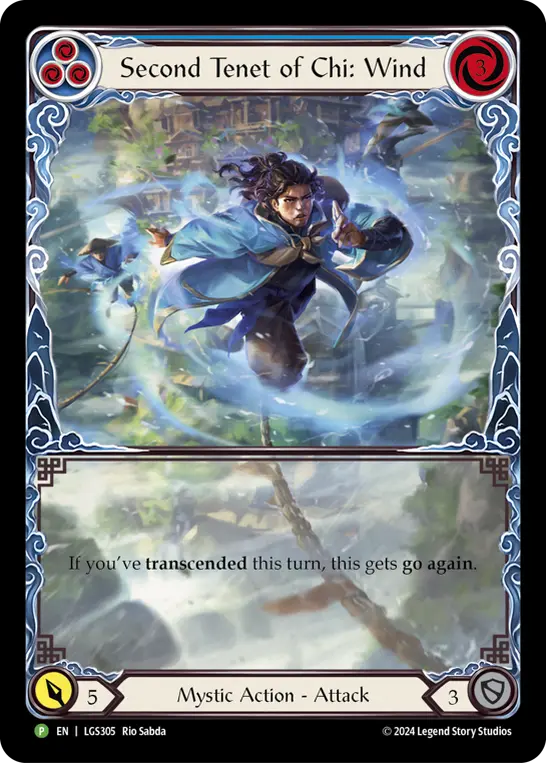

The real limit of this list is action points: sometimes you'll have an aura action that you'd like to play, but it lacks go again, and you've got a Spectral Shield to attack with. These can be frustrating moments, especially if you didn't read your hand properly on the defensive and took damage to hold back a card you now can't elegantly play out. In my limited playtime with the list, I've found it best to adopt a 'live in the moment' attitude that lets cards slip through your fingers without getting attached. It's also worth pointing out that there are a few tricks that get around this: Meridian Pathway can be a powerful option for your Chi, and First Tenet of Chi: Wind can fully utilize an oversized hand.
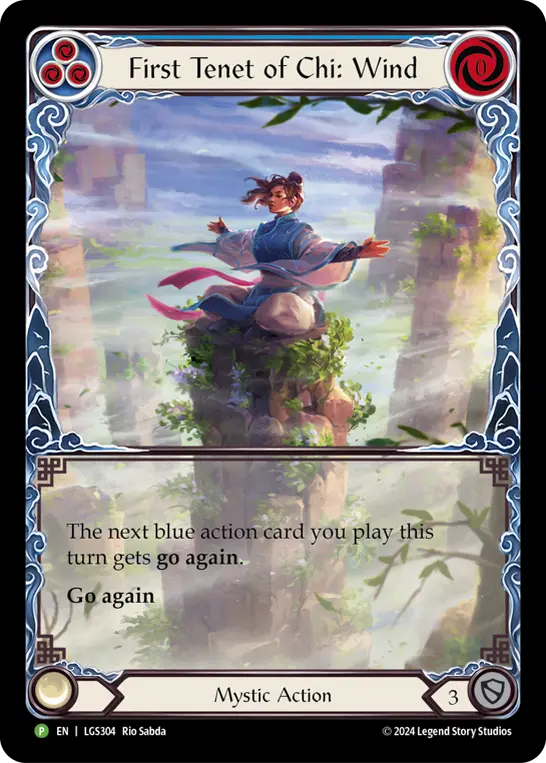

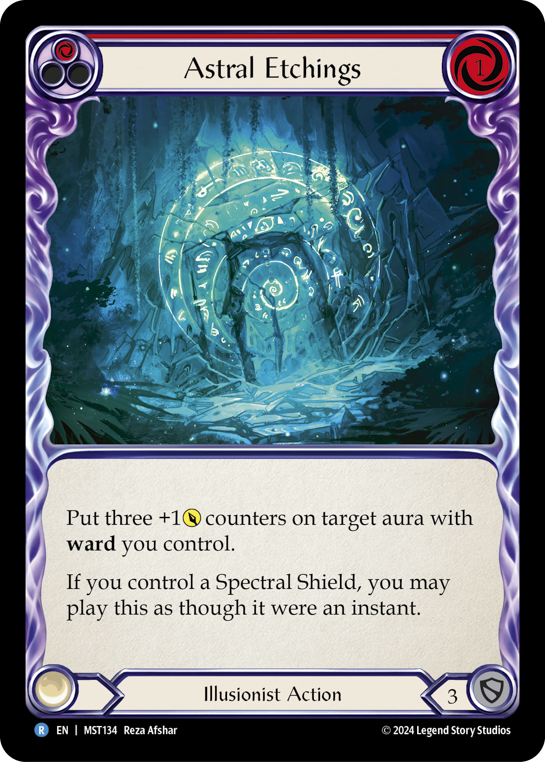
Astral Etchings is a game-winning card. The gameplan's redundancy on the offensive can lull an opponent into complacency, but once you've played an instant-speed +3 that sticks to the aura, your opponent won't feel safe anymore. A Spectral Shield with a few tokens on it can jolt you from a laissez-faire attitude, and the list is fully capable of shifting to a strategy of 'keep the shields up!' when a value proposition demands it; but ultimately, we have to make peace with letting our illusions fall. After all, a full reset is usually still an attack for 5-8.
Refractor Enigma is unlikely to be the ultimate form of Enigma. While it probably has a different matchup spread than the board state builds of Cosmo, it's hard to say a deck that regularly sides out Manifestation of Miragai is the best build for the hero.
But for players like me who love the idea of Illusionist but not the reality of Illusionist, Refractor Enigma breathes life into an entire card pool. This is a deck list worth knowing about outside of Enigma's community, and proves that there's more than one way to play any hero in Flesh and Blood.




